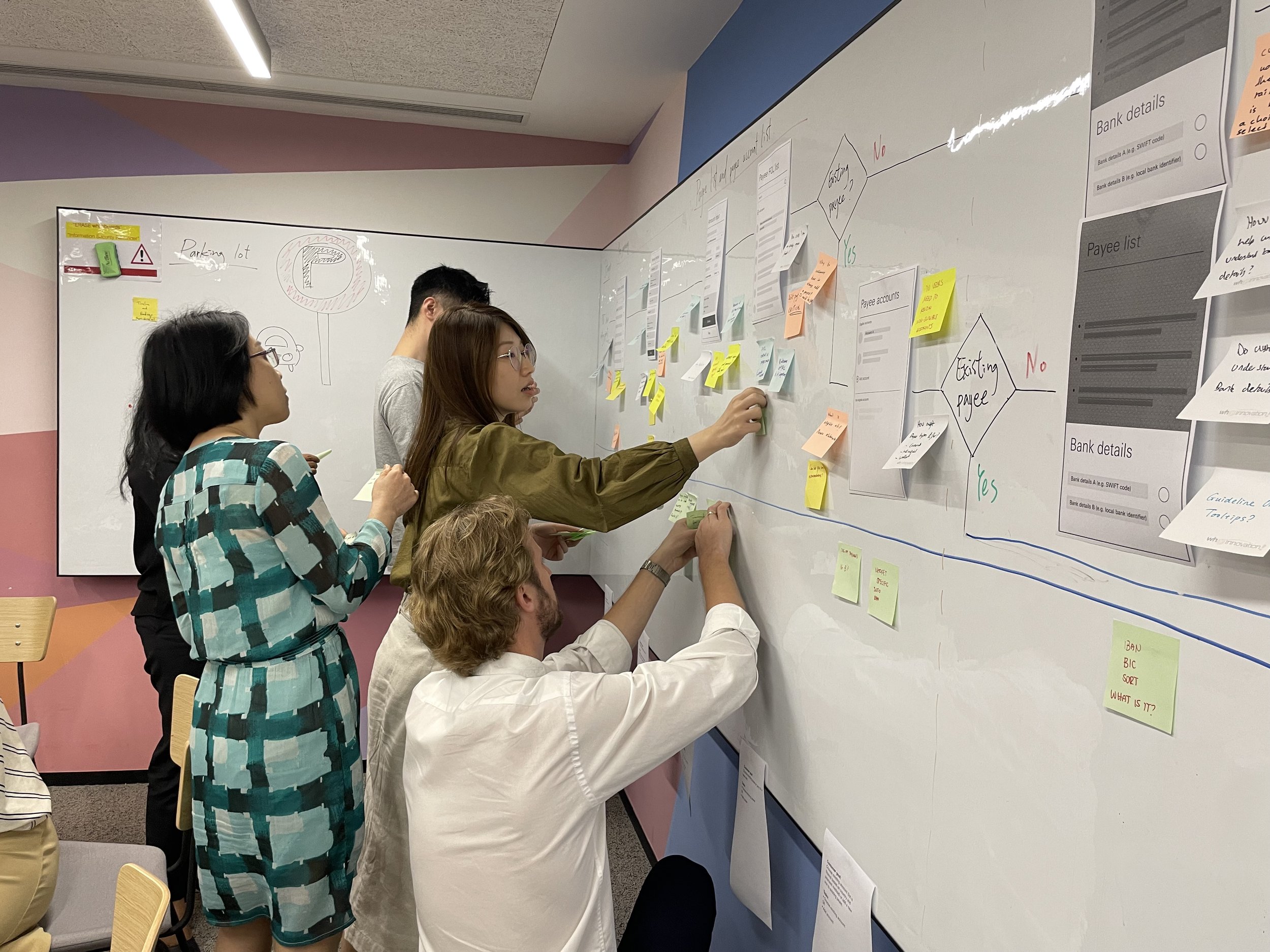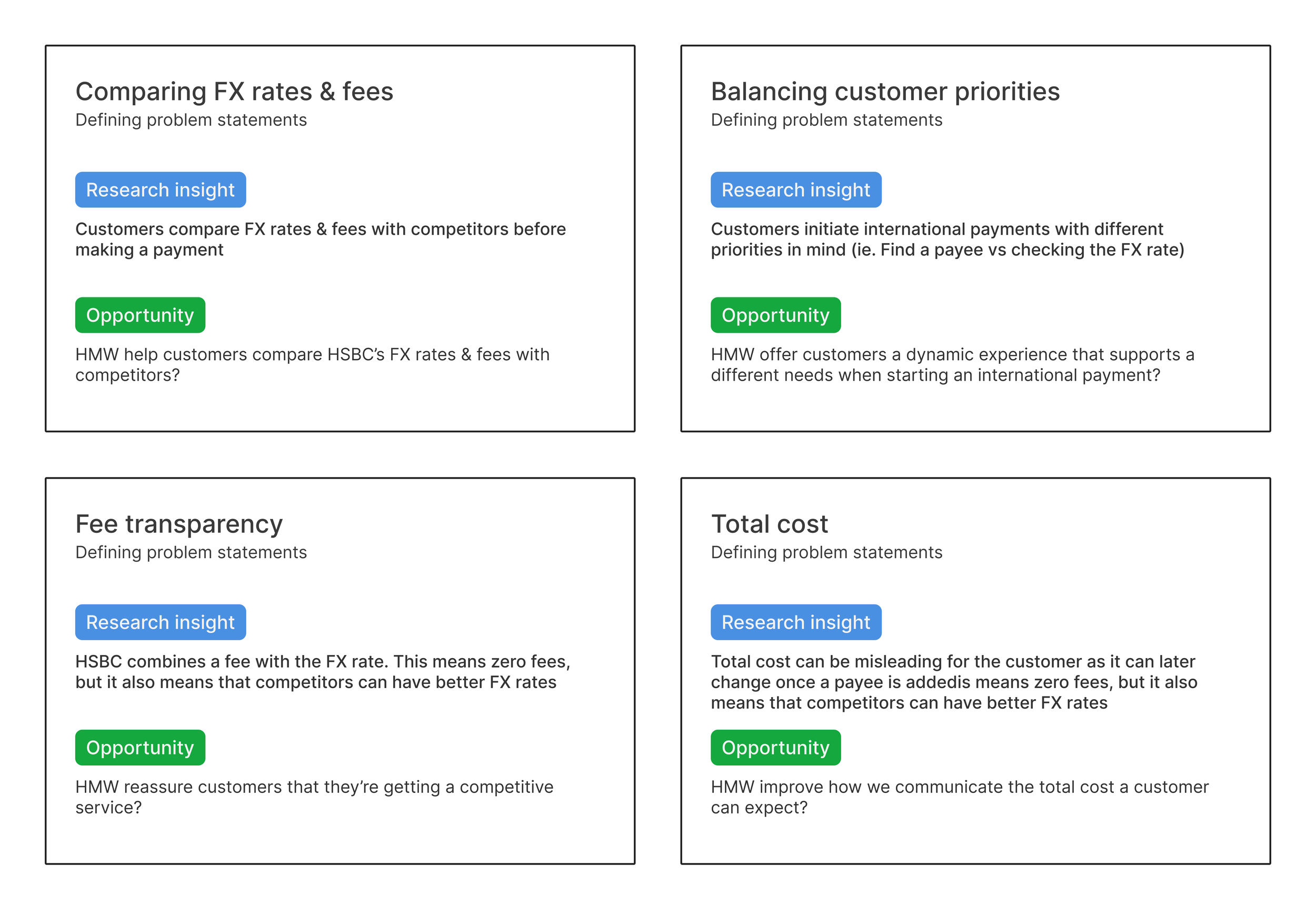Sending money overseas with HSBC
Project background
HSBC Global Money Transfers is a mobile journey enabling customers to send money overseas. This case study shows the process of identifying pain points and redesigning the end-to-end journey.
May 2023 - November 2023
My role
I led a team of UX designers to collaborate with the business & product teams; redesigning one of HSBC’s most important customer journeys.
I established a UX discovery process that empowered the design team and communicated to stakeholders our plan.
Responsible for
UX discovery
Workshops
Product scope
Product & service blueprints
Concept design
The Challenge
From our initial Singapore launch in June 2022, we launched the journey in 7 more markets. By October 2023, the journey has had over 2.5 million uses, more than $20 billion sent via the journey. Through testing and customer feedback we had identified many pain points. Areas of interest included, enhancing the flow, simplifying inputs, ensuring transparent and accurate cost breakdowns, and adding more features to enrich the overall experience.
The Objective
Our objective was ambitious, create a world class experience that delivers a transparent and effortless means of making international payments. Motivated by customer feedback and a shared vision of improvements, we initiated a comprehensive discovery process, delving into data, research, and feedback. The current journey was straightforward, with lots of room for improvement.
8 Live
Markets
Launched the journey to 8 markets in 1.5 years
+2.5m
Payments
Amount of overseas payments in the last 12 months
55
NPS
Average net promoter score for the journey
Research & discovery
We gathered insights from various sources, including customer research, market data, and direct feedback. To make them more consumable for the workshop, we had a researcher refine and consolidate the insights. Our initial goal was to align stakeholders on the current journey state. We involved 15 team members from different areas, who used sticky notes to map insights onto journey stages. Subsequently, sub-teams examined insights and identified patterns.
Defining product scope
Using the How Might We (HMW) methodology we turned the insight into statements of opportunity. We created over 25 problem statements covering the entire service journey, encompassing the stages before, during and after the payment journey.
Working with a diverse group of stakeholders, we evaluated and prioritised each problem statement to create a product scope and backlog.
Ideation with stakeholders
Ideation workshops brought together the extensive and diverse knowledge of teams in design, product, tech, marketing, and business. I hosted a series of workshops to tackle the top 8 opportunity statements.
Solution statements were reviewed and categorised, identifying those that were feasible and best addressed the customer problem. These promising ideas were integrated into our blueprint and considered for our concept designs.
Creating a global journey
To build a strong foundation, it was important to align teams and market stakeholders on the future state of the journey. By creating a service blueprint, we empowered teams to develop product strategies, and start engineering early, optimising our chances of delivering the best customer experience.
Concepts & exploration coming soon
Concept designs & exploration will be added to this case study soon.
↓ scroll down for the project summary ↓
Project summary
This project was huge, and it wasn’t without its challenges along the way. Some of thoughts and reminders for my next project are:
Starting with a blueprint allowed us to ideate in a safe space. Aligning different global journeys before moving onto design concepts provided us some helpful constraints to work with
Creating a design plan with a timeline was vital to communicate our progress, and helped us plan for extensive user testing ahead of time
Find the right balance of stakeholder updates. Take people on a journey, but don’t waste their time. Information should answer questions or be actionable, not everyone needs to see the process
Acknowledgements
Michelle Cao (UX co-lead & designer), Keira Tsang (UX designer), Dan Lin (UX designer), Andrew Lowe (DPM), Kai Dellinger (Workshop facilitator)











